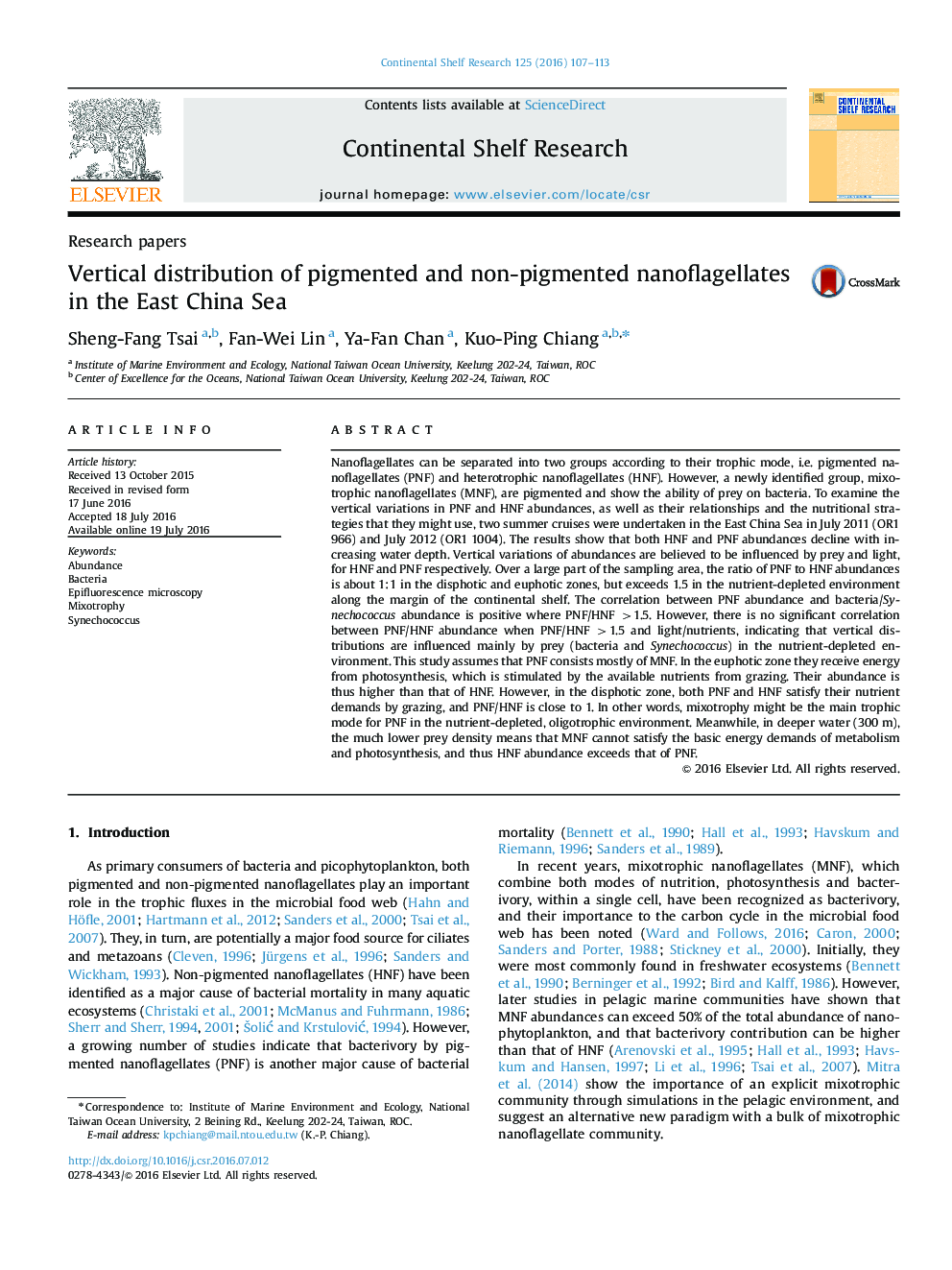| کد مقاله | کد نشریه | سال انتشار | مقاله انگلیسی | نسخه تمام متن |
|---|---|---|---|---|
| 4531580 | 1626088 | 2016 | 7 صفحه PDF | دانلود رایگان |
• The abundance of PNF is higher than that of HNF in nutrient-depleted euphotic zone.
• PNF bacterivory potentially satisfy their basic nutrient demands in disphotic zone.
• The abundance of PNF is much lower than that of HNF in the lower aphotic zone.
Nanoflagellates can be separated into two groups according to their trophic mode, i.e. pigmented nanoflagellates (PNF) and heterotrophic nanoflagellates (HNF). However, a newly identified group, mixotrophic nanoflagellates (MNF), are pigmented and show the ability of prey on bacteria. To examine the vertical variations in PNF and HNF abundances, as well as their relationships and the nutritional strategies that they might use, two summer cruises were undertaken in the East China Sea in July 2011 (OR1 966) and July 2012 (OR1 1004). The results show that both HNF and PNF abundances decline with increasing water depth. Vertical variations of abundances are believed to be influenced by prey and light, for HNF and PNF respectively. Over a large part of the sampling area, the ratio of PNF to HNF abundances is about 1:1 in the disphotic and euphotic zones, but exceeds 1.5 in the nutrient-depleted environment along the margin of the continental shelf. The correlation between PNF abundance and bacteria/Synechococcus abundance is positive where PNF/HNF >1.5. However, there is no significant correlation between PNF/HNF abundance when PNF/HNF >1.5 and light/nutrients, indicating that vertical distributions are influenced mainly by prey (bacteria and Synechococcus) in the nutrient-depleted environment. This study assumes that PNF consists mostly of MNF. In the euphotic zone they receive energy from photosynthesis, which is stimulated by the available nutrients from grazing. Their abundance is thus higher than that of HNF. However, in the disphotic zone, both PNF and HNF satisfy their nutrient demands by grazing, and PNF/HNF is close to 1. In other words, mixotrophy might be the main trophic mode for PNF in the nutrient-depleted, oligotrophic environment. Meanwhile, in deeper water (300 m), the much lower prey density means that MNF cannot satisfy the basic energy demands of metabolism and photosynthesis, and thus HNF abundance exceeds that of PNF.
Journal: Continental Shelf Research - Volume 125, 15 August 2016, Pages 107–113
